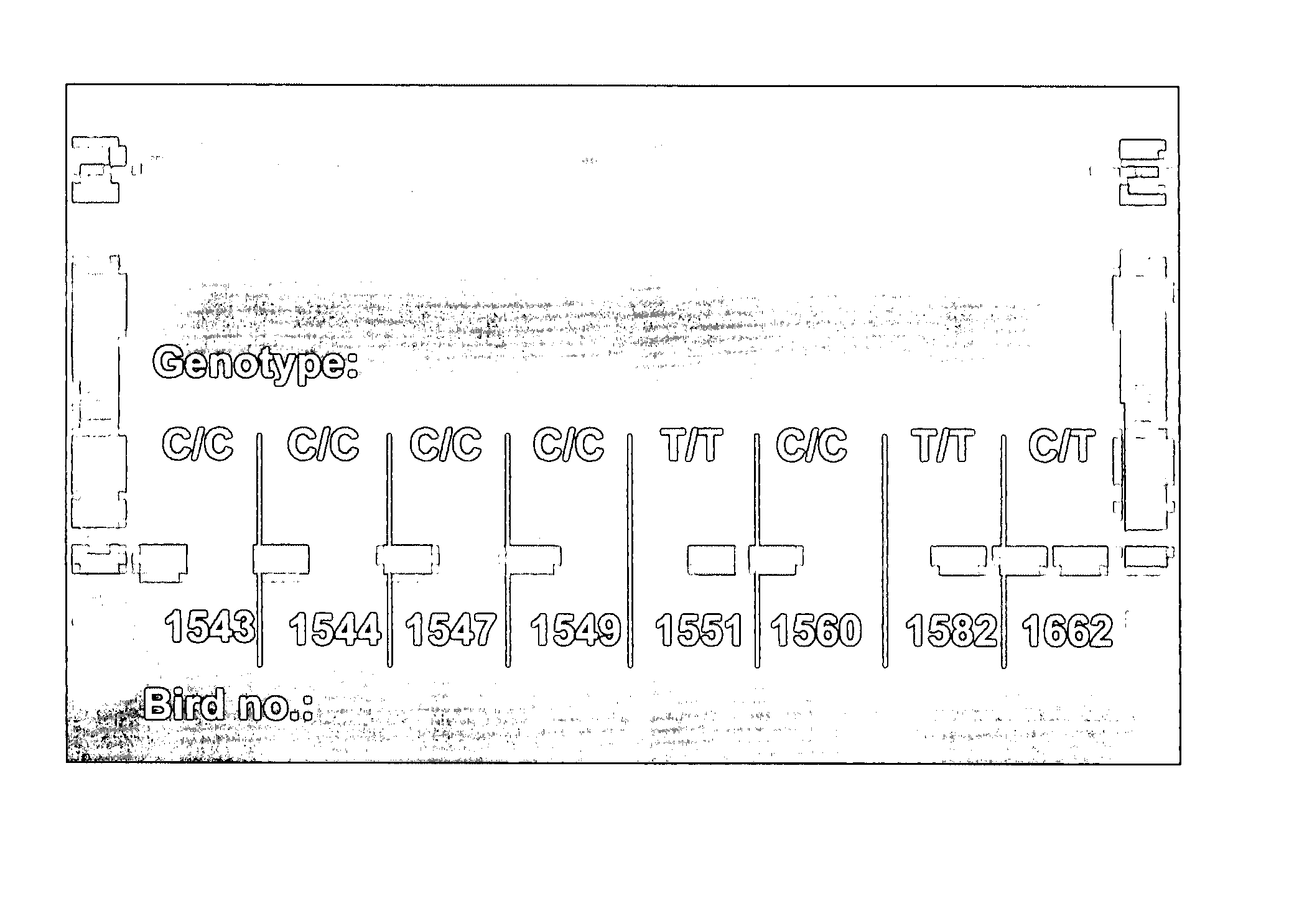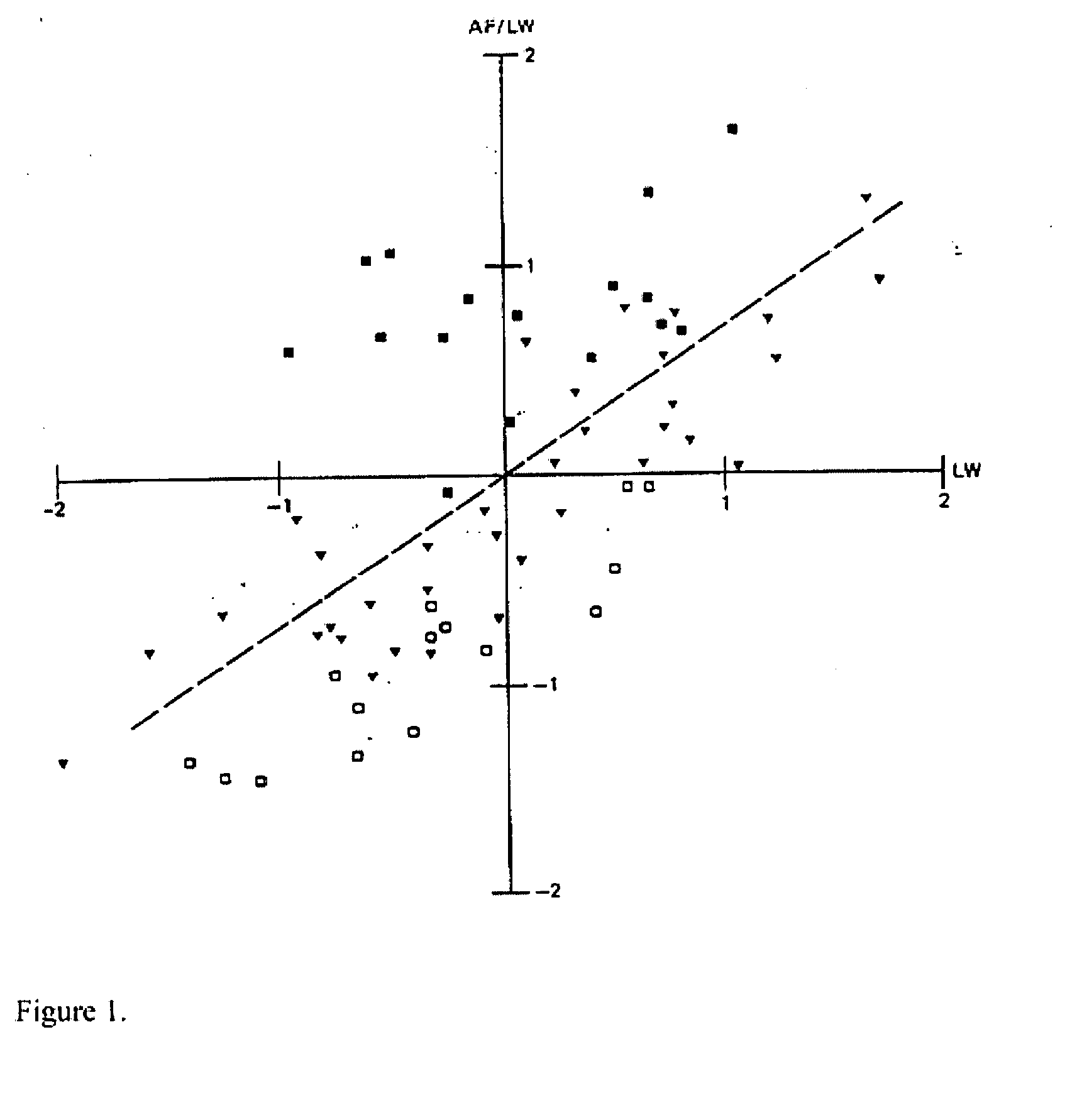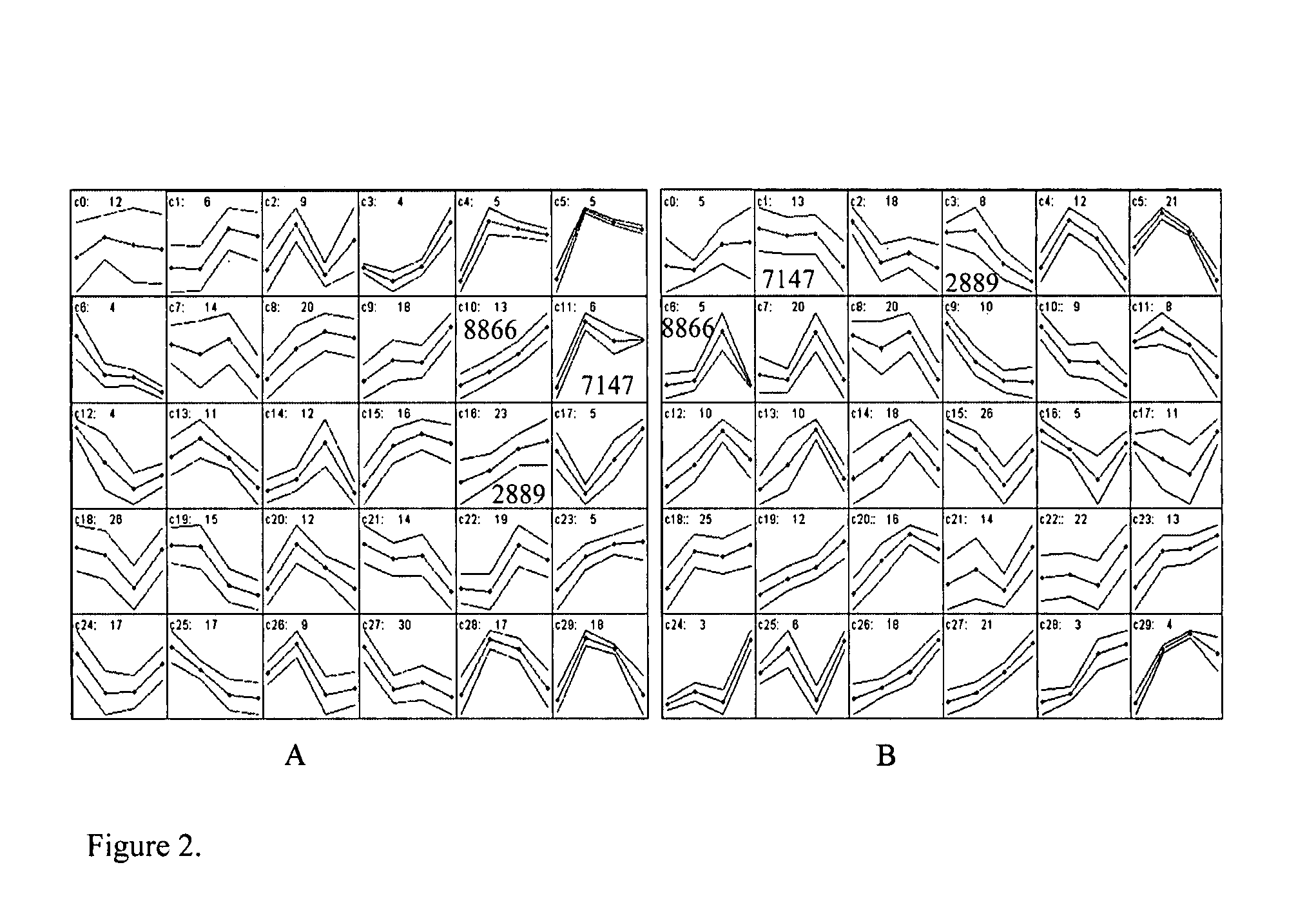Genetic polymorphisms associated with body fat
- Summary
- Abstract
- Description
- Claims
- Application Information
AI Technical Summary
Benefits of technology
Problems solved by technology
Method used
Image
Examples
Embodiment Construction
[0041] In describing a preferred embodiment of the invention specific terminology will be resorted to for the sake of clarity. However, the invention is not intended to be limited to the specific terms so selected, and it is to be understood that each specific term includes all technical equivalents which operate in a similar manner to accomplish a similar purpose.
[0042] Fat line and Lean line chickens were produced by inseminating hens with pooled semen from each line (eight pools; seven hens per semen pool). Each hen's eggs were marked and incubated; chicks were sexed, wing-banded, and vaccinated against Marek's disease at hatch. Males (87 Fat, and 102 Lean) were reared together in 4.4×3.9 meter floor pens under a standard heat program. The chickens were fed ad libitum a mashed diet for the first few days, a pelleted starter diet for the first three weeks and then a growing diet up to week 11; water was freely available. Light cycles were 24 hours for the first two days and then ...
PUM
| Property | Measurement | Unit |
|---|---|---|
| Fraction | aaaaa | aaaaa |
| Fraction | aaaaa | aaaaa |
| Fraction | aaaaa | aaaaa |
Abstract
Description
Claims
Application Information
 Login to View More
Login to View More - R&D
- Intellectual Property
- Life Sciences
- Materials
- Tech Scout
- Unparalleled Data Quality
- Higher Quality Content
- 60% Fewer Hallucinations
Browse by: Latest US Patents, China's latest patents, Technical Efficacy Thesaurus, Application Domain, Technology Topic, Popular Technical Reports.
© 2025 PatSnap. All rights reserved.Legal|Privacy policy|Modern Slavery Act Transparency Statement|Sitemap|About US| Contact US: help@patsnap.com



